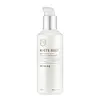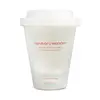What's inside
What's inside
 Key Ingredients
Key Ingredients

 Benefits
Benefits

 Concerns
Concerns

No concerns
 Ingredients Side-by-side
Ingredients Side-by-side

Water
Skin ConditioningPropanediol
SolventPropylene Glycol Dicaprylate/Dicaprate
EmollientNiacinamide
SmoothingCaprylic/Capric Triglyceride
Masking1,2-Hexanediol
Skin ConditioningCyclopentasiloxane
EmollientPanthenol
Skin ConditioningCyclohexasiloxane
EmollientCetearyl Olivate
PEG-100
HumectantStearyl Stearate
EmollientGlyceryl Stearate
EmollientCetearyl Alcohol
EmollientCaprylic/Capric Glycerides
EmollientSorbitan Olivate
EmulsifyingButylene Glycol
HumectantLupinus Albus Seed Extract
Skin ConditioningBellis Perennis Flower Extract
Skin ConditioningPolyglutamic Acid
Skin ConditioningHexylresorcinol
AntimicrobialSalix Alba Bark Extract
AstringentChenopodium Quinoa Seed Extract
Skin ConditioningAcrylates/C10-30 Alkyl Acrylate Crosspolymer
Emulsion StabilisingCarbomer
Emulsion StabilisingPotassium Hydroxide
BufferingDisodium EDTA
Phenoxyethanol
PreservativeParfum
MaskingWater, Propanediol, Propylene Glycol Dicaprylate/Dicaprate, Niacinamide, Caprylic/Capric Triglyceride, 1,2-Hexanediol, Cyclopentasiloxane, Panthenol, Cyclohexasiloxane, Cetearyl Olivate, PEG-100, Stearyl Stearate, Glyceryl Stearate, Cetearyl Alcohol, Caprylic/Capric Glycerides, Sorbitan Olivate, Butylene Glycol, Lupinus Albus Seed Extract, Bellis Perennis Flower Extract, Polyglutamic Acid, Hexylresorcinol, Salix Alba Bark Extract, Chenopodium Quinoa Seed Extract, Acrylates/C10-30 Alkyl Acrylate Crosspolymer, Carbomer, Potassium Hydroxide, Disodium EDTA, Phenoxyethanol, Parfum
Water
Skin ConditioningNiacinamide 5%
SmoothingPropanediol
SolventCentella Asiatica Leaf Water 3.8%
Skin ConditioningGlycerin
HumectantButylene Glycol Dicaprylate/Dicaprate
EmollientSqualane 2%
Emollient1,2-Hexanediol
Skin ConditioningCetearyl Olivate
Panthenol
Skin ConditioningAmmonium Acryloyldimethyltaurate/Vp Copolymer
Sorbitan Olivate
EmulsifyingCarbomer
Emulsion StabilisingSclerotium Gum
Emulsion StabilisingTromethamine
BufferingHelianthus Annuus Seed Oil
EmollientXanthan Gum
EmulsifyingMadecassoside
AntioxidantEthylhexylglycerin
Skin ConditioningDisodium EDTA
Xylitol
HumectantAscorbic Acid
AntioxidantWater, Niacinamide 5%, Propanediol, Centella Asiatica Leaf Water 3.8%, Glycerin, Butylene Glycol Dicaprylate/Dicaprate, Squalane 2%, 1,2-Hexanediol, Cetearyl Olivate, Panthenol, Ammonium Acryloyldimethyltaurate/Vp Copolymer, Sorbitan Olivate, Carbomer, Sclerotium Gum, Tromethamine, Helianthus Annuus Seed Oil, Xanthan Gum, Madecassoside, Ethylhexylglycerin, Disodium EDTA, Xylitol, Ascorbic Acid
 Reviews
Reviews

Ingredients Explained
These ingredients are found in both products.
Ingredients higher up in an ingredient list are typically present in a larger amount.
1,2-Hexanediol is a synthetic liquid and another multi-functional powerhouse.
It is a:
- Humectant, drawing moisture into the skin
- Emollient, helping to soften skin
- Solvent, dispersing and stabilizing formulas
- Preservative booster, enhancing the antimicrobial activity of other preservatives
Carbomer is a polymer of acrylic acid. Its main role is to create a gel consistency.
A high amount of carbomer can cause pilling or balling up of products. Don't worry, most products contain 1% or less of carbomer.
Cetearyl Olivate is an emulsifier and texture enhancer. It is derived from the fatty acids of olive oil and Cetearyl alcohol, and is biodegradable.
As an emulsifier, it is used to prevent oils and waters from separating. It can also
Manufacturers use the name Olivem 1000. This ingredient has been found to preserve the natural microbiome of skin. Having a healthy microbiome helps keep our skin healthy and protects against harmful bacteria. This ingredient is grouped with Sorbitan Olivate under the name Olivem 1000.
Learn more about Cetearyl OlivateDisodium EDTA plays a role in making products more stable by aiding other preservatives.
It is a chelating agent, meaning it neutralizes metal ions that may be found in a product.
Disodium EDTA is a salt of edetic acid and is found to be safe in cosmetic ingredients.
Learn more about Disodium EDTANiacinamide is a multitasking form of vitamin B3 that strengthens the skin barrier, reduces pores and dark spots, regulates oil, and improves signs of aging.
And the best part? It's gentle and well-tolerated by most skin types, including sensitive and reactive skin.
You might have heard of "niacin flush", or the reddening of skin that causes itchiness. Niacinamide has not been found to cause this.
In very rare cases, some individuals may not be able to tolerate niacinamide at all or experience an allergic reaction to it.
If you are experiencing flaking, irritation, and dryness with this ingredient, be sure to double check all your products as this ingredient can be found in all categories of skincare.
When incorporating niacinamide into your routine, look out for concentration amounts. Typically, 5% niacinamide provides benefits such as fading dark spots. However, if you have sensitive skin, it is better to begin with a smaller concentration.
When you apply niacinamide to your skin, your body converts it into nicotinamide adenine dinucleotide (NAD). NAD is an essential coenzyme that is already found in your cells as "fuel" and powers countless biological processes.
In your skin, NAD helps repair cell damage, produce new healthy cells, support collagen production, strengthen the skin barrier, and fight environmental stressors (like UV and pollution).
Our natural NAD levels start to decline with age, leading to slower skin repair, visible aging, and a weaker skin barrier. By providing your skin niacinamide, you're recharging your skin's NAD levels. This leads to stronger, healthier, and younger looking skin.
Another name for vitamin B3 is nicotinamide. This vitamin is water-soluble and our bodies don't store it. We obtain Vitamin B3 from either food or skincare. Meat, fish, wheat, yeast, and leafy greens contain vitamin B3.
The type of niacinamide used in skincare is synthetically created.
Learn more about NiacinamidePanthenol is a common ingredient that helps hydrate and soothe the skin. It is found naturally in our skin and hair.
There are two forms of panthenol: D and L.
D-panthenol is also known as dexpanthenol. Most cosmetics use dexpanthenol or a mixture of D and L-panthenol.
Panthenol is famous due to its ability to go deeper into the skin's layers. Using this ingredient has numerous pros (and no cons):
Like hyaluronic acid, panthenol is a humectant. Humectants are able to bind and hold large amounts of water to keep skin hydrated.
This ingredient works well for wound healing. It works by increasing tissue in the wound and helps close open wounds.
Once oxidized, panthenol converts to pantothenic acid. Panthothenic acid is found in all living cells.
This ingredient is also referred to as pro-vitamin B5.
Learn more about PanthenolPropanediol is an all-star ingredient. It softens, hydrates, and smooths the skin.
It’s often used to:
Propanediol is not likely to cause sensitivity and considered safe to use. It is derived from corn or petroleum with a clear color and no scent.
Learn more about PropanediolSorbitan Olivate is created from the fatty acids in olive oil and sorbitol.
This ingredient is an oil in water emulsifier. It helps stabilize a product by preventing oils and waters from separating. Sorbitan Olivate also helps hydrate the skin.
Manufacturers sell sorbitan olivate under the name OliveM 1000. OliveM 1000 a multifunctional ingredient. It is self-emulsifying. According to a manufacturer, OliveM 1000 does not disrupt natural skin biome.
Due to its olive oil base, this ingredient may not be fungal-acne safe.
Learn more about Sorbitan OlivateWater. It's the most common cosmetic ingredient of all. You'll usually see it at the top of ingredient lists, meaning that it makes up the largest part of the product.
So why is it so popular? Water most often acts as a solvent - this means that it helps dissolve other ingredients into the formulation.
You'll also recognize water as that liquid we all need to stay alive. If you see this, drink a glass of water. Stay hydrated!
Learn more about Water